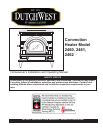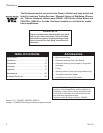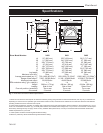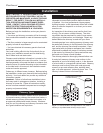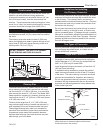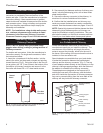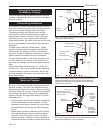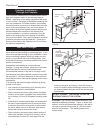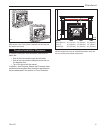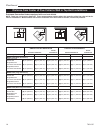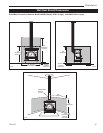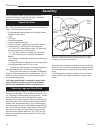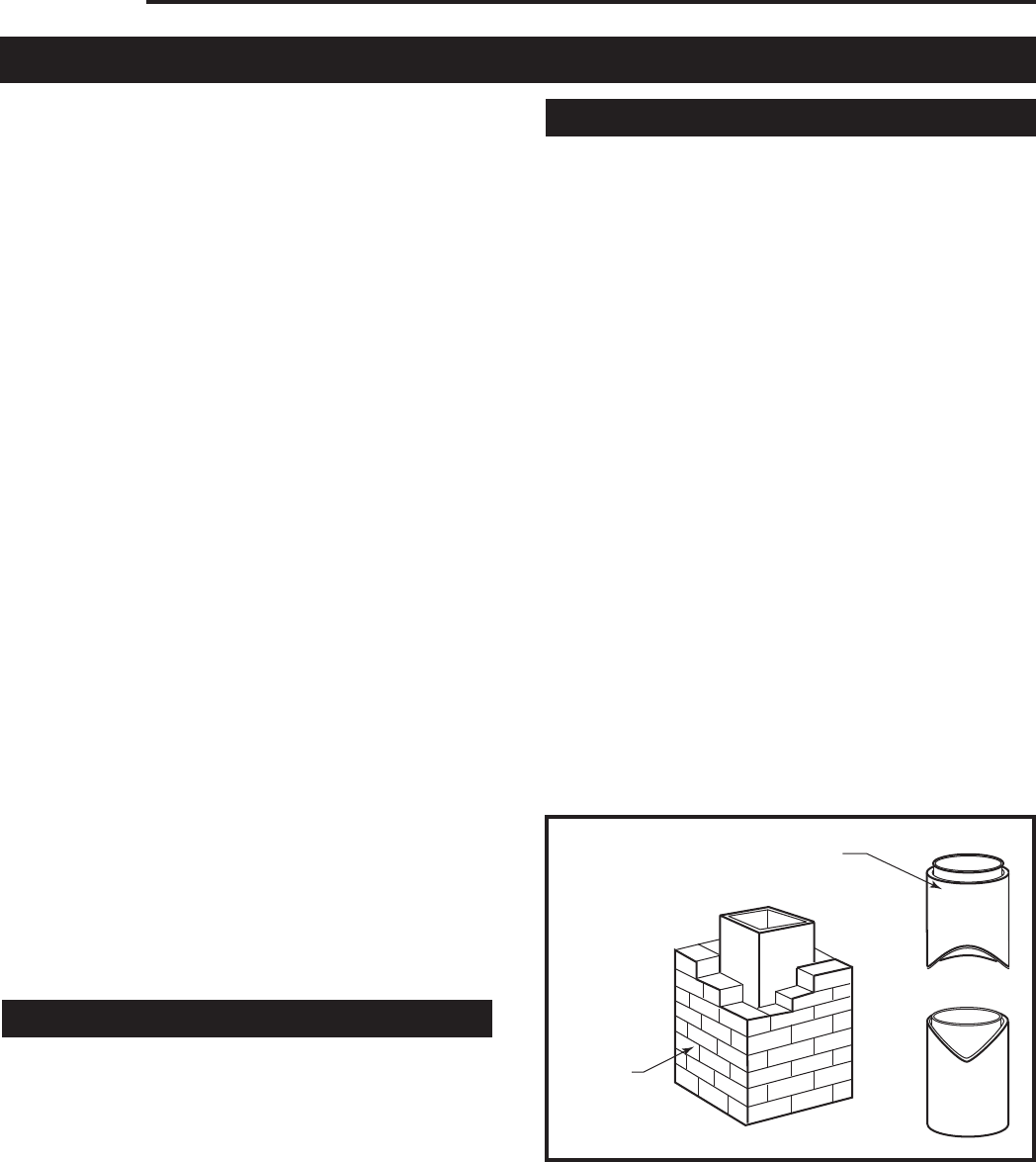
4
Dutchwest
7001135
Installation
SAFETY NOTICE: IF YOUR DUTCHWEST CON-
VECTION HEATER IS NOT PROPERLY INSTALLED,
OPERATED AND MAINTAINED, A HOUSE FIRE MAY
RESULT. FOR SAFETY, FOLLOW ALL INSTALLA-
TION, OPERATION AND MAINTENANCE DIREC-
TIONS. CONTACT LOCAL BUILDING OFFICIALS
ABOUT RESTRICTIONS AND INSTALLATION
INSPECTION REQUIREMENTS IN YOUR AREA.
Before you begin the installation, review your plans to
confirm that:
• Your stove and chimney connector will be far enough
from combustible material to meet all clearance require-
ments.
• The floor protector is large enough and is constructed
properly to meet all requirements.
• You have obtained all necessary permits from local
authorities.
Your local building official is the final authority for ap-
proving your installation as safe and for determining
that it meets local and state codes.
Clearance and installation information is printed on the
metal label attached to the rear of the stove. Local au-
thorities generally will accept the label as evidence that,
when the stove is installed according to the information
on the label and in this manual, the installation meets
codes and can be approved.
Codes vary in different areas, however. Before starting
the installation, review your plans with the local building
authority. Your local dealer can provide any additional
information needed.
Important: Failure to follow these installation instruc-
tions may result in a dangerous situation, including a
chimney or house fire. Follow all instructions exactly,
and do not allow makeshift compromises to endanger
property and personal safety.
Chimney Types
Your Dutchwest Convection Heater must be connected
to a sound masonry chimney that meets local codes, a
relined masonry chimney that meets local codes, or to
an approved prefabricated metal chimney. Whatever
kind you use, the chimney and chimney connector must
be in good condition and kept clean.
Masonry Chimneys
If you use an existing masonry chimney, it must be
inspected to ensure safe condition before the stove
is installed. Your local professional chimney sweep,
building inspector, or fire department official will be able
either to make the inspection or to direct you to some-
one who can.
An inspection of the chimney must confirm that it has
a lining. Do not use an unlined chimney. The chim-
ney should also be examined for cracks, loose mortar,
other signs of deterioration, and blockage. Repair any
defects before the chimney is used with your stove.
Unused openings in an existing masonry chimney must
be sealed with masonry to the thickness of the chimney
wall, and the chimney liner should be repaired. Open-
ings sealed with pie plates or wallpaper are a hazard
and should be sealed with mortar or refractory cement.
In the event of a chimney fire, flames and smoke may
be forced out of these unused thimbles.
The chimney should be thoroughly cleaned before use.
A newly-built masonry chimney must conform to the
standards of your local building code or, in the absence
of a local code, to a recognized national code. Masonry
chimneys must be lined, either with code-approved
masonry or pre-cast refractory tiles, stainless steel
pipe, or a code-approved, “poured-in-place” liner. The
chimney’s clean-out door must seal tightly.
ST241
chimney types
12/13/99 djt
Prefabricated Double-Wall
Insulated Chimney
Tile Lined
Masonry
Chimney
ST241
Fig. 2 If in sound condition and approved for use, either a
masonry or a prefabricated chimney may be used.



